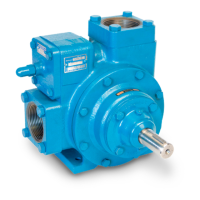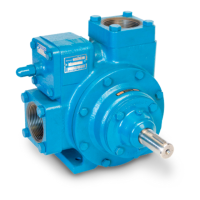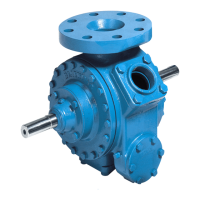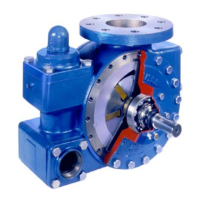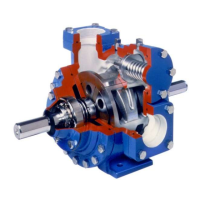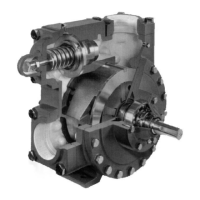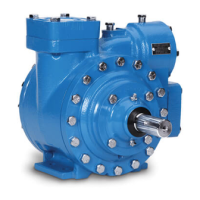BLACKMER TRUCK PUMPS
960280
INSTRUCTIONS NO. 201-A00
INSTALLATION OPERATION AND MAINTENANCE INSTRUCTIONS
MODELS: TX, TXD - 1.5, 2A, 2.5A, 3E, 4A
Section
Effective
Replaces
201
May 2012
Jan 2012
Numbers in parentheses following individual parts
indicate reference numbers on Blackmer Parts Lists
201-A01, 201-A02, 201-A03, 201-A04 and 201-A05.
Blackmer pump manuals and parts lists may be
obtained from Blackmer’s website (www.blackmer.com)
or by contacting Blackmer Customer Service.
TABLE OF CONTENTS Page
PUMP DATA
Technical Data ....................................................... 2
Initial Pump Start Up Information ........................... 2
INSTALLATION
Pre-Installation Cleaning ........................................ 3
Location and Piping ............................................... 3
Truck Mounting ...................................................... 3
Pump Drive ............................................................ 3
Pump Rotation ....................................................... 4
To Change Pump Rotation .................................... 4
OPERATION
Pre-Start Up Check List ......................................... 5
Start Up Procedures .............................................. 5
Pump Speed .......................................................... 5
Reverse Rotation ................................................... 5
Flushing the Pump ................................................. 6
Pump Relief Valve ................................................. 6
Relief Valve Setting and Adjustment...................... 6
MAINTENANCE
Strainers ................................................................ 7
Lubrication ............................................................. 7
Vane Replacement ................................................ 8
Pump Disassembly ................................................ 8
Pump Assembly ..................................................... 9
TROUBLE SHOOTING ...................................... 10
SAFETY DATA
This is a SAFETY ALERT SYMBOL.
When you see this symbol on the product, or in the
manual, look for one of the following signal words and be
alert to the potential for personal injury, death or major
property damage
Warns of hazards that WILL cause serious personal injury,
death or major property damage.
Warns of hazards that CAN cause serious personal injury,
death or major property damage.
Warns of hazards that CAN cause personal injury
or property damage.
NOTICE:
Indicates special instructions which are very
important and must be followed.
NOTICE:
Blackmer Truck Pumps MUST only be installed in systems,
which have been designed by qualified engineering
personnel. The system MUST conform to all applicable
local and national regulations and safety standards.
This manual is intended to assist in the installation and
operation of the Blackmer truck pumps, and MUST be kept
with the pump.
Pump service shall be performed by qualified technicians
ONLY. Service shall conform to all applicable local and
national regulations and safety standards.
Thoroughly review this manual, all instructions and hazard
warnings, BEFORE performing any work on the pump.
Maintain ALL system and pump operation and hazard
warning decals.
